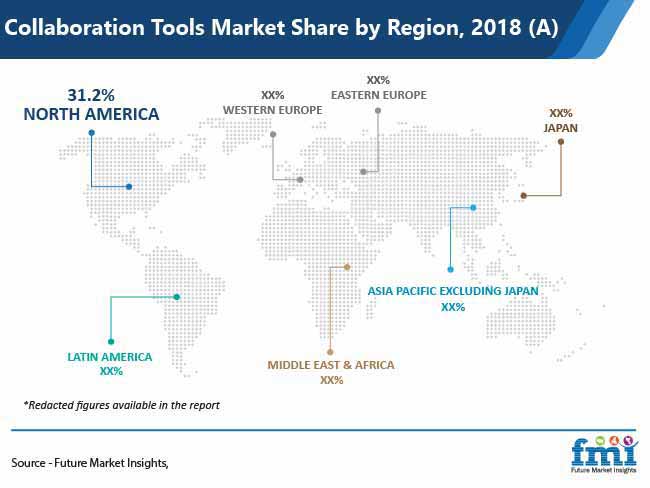Unified communication and collaboration is a combination of enterprise communication tools assembled and integrated into a single management system. The collaboration tools market is expected to significantly benefit from the adoption of these tools. Unified communication and collaboration tools give seamless user experience by integrating multiple technologies and tools such as telephony calling, voice, instant messaging, desktop sharing, video and audio conferencing, and cloud architects that help people work together more effectively anywhere and on any device.
As such, the global collaboration tools market is expected to exhibit a CAGR of around 11% during the forecast period (2019-2029).
“Key players in the market can gain significant profits by providing cognitive intelligence-based collaboration tools that deliver artificial intelligence, machine learning, and deep learning capabilities, which will give a virtual team experience across multiple locations.”
Request a report sample to gain comprehensive market insights @ https://www.futuremarketinsights.com/reports/sample/rep-gb-4415
Key Takeaways of Collaboration Tools Market Study
- The portal and intranet platform segment is estimated to hold significant market share in the collaboration tools market during the forecast period, as these portals serve as a central hub in providing information and integrating applications for employees.
- By deployment, the cloud segment is estimated to register a notable CAGR. SMEs are adopting SaaS collaboration software, which is available on subscription basis, and is flexible and scalable to requirements for a number of employees.
- Asia Pacific excluding Japan is expected to dominate the global collaboration tools market, as the demand for robust collaboration for improving communication and workforce productivity is increasing across various organizations in countries such as China and India.
- Growing adoption of the Bring Your Own Device (smartphones, tablets, etc.) trend in the IT & telecom industry is expected to increase the demand for collaboration tools to secure, manage, and support devices.

Virtual Reality and Augmented Reality for Real-Time Remote Collaboration
Virtual reality and augmented reality enable real-time remote collaboration experiences for enterprises. Enterprises are using these technologies to have location-based informational services. Also, QR codes give access to people and information about the company’s products or services. As distributed teams is becoming a norm across companies, VR and AR technologies are proving to be useful for communication among employees even though the employees are not present in the same place. Immersive boardroom experiences, cataloging body language, supporting avatars, and changing backgrounds are some features that AR and VR make possible. AR and VR allows multiuser capabilities where users can collaborate to work on product design and development in the digital world.
For Information On The Research Approach Used In The Report, Ask Analyst @ https://www.futuremarketinsights.com/ask-question/rep-gb-4415
- For instance, RealSense offers VR products that can change the background to the content of the live streamer to enhance presentations for all.
More Valuable Insights on Collaboration Tools Market
FMI’s report on the collaboration tools market is segmented into four major sections – solution (platforms and services), deployment (on-premise and cloud), enterprise size (small & medium enterprises and large enterprises), industry (IT & Telecom, BFSI, healthcare, travel & hospitality, retail & e-Commerce, manufacturing, and others), and region, to help readers understand and evaluate the lucrative opportunities present in the collaboration tools market.
About Technology Division at Future Market Insights
The technology team at Future Market Insights offers expert analysis, time efficient research, and strategic recommendations with an objective to provide authentic insights and accurate results to help clients worldwide. With a repertoire of over 100+ reports and 1 million+ data points, the team has been analyzing the industry lucidly in 50+ countries for over a decade. The team provides a brief analysis on key trends including competitive landscape, profit margin, and research development efforts.
